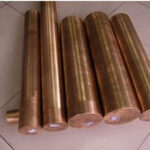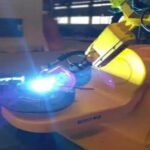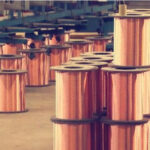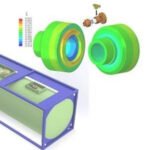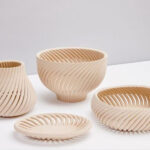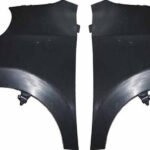In the past 35 years, NC and CNC in metal manufacturing have become more and more complex. They control different axes in robotic bending machine units, stamping systems with material handling, laser systems with material handling and storage systems, robotic welding, etc.
Even so, one area seems to have fallen behind: sheet metal and plate rolls. However, advances in control and its software have begun to increase rolling output in a significant way.
In many cases, this technology allows rolling to adapt to changes in materials, and modern four-roll CNC machines can produce complex parts in as little as 30 seconds. Like any technological advancement, intelligent rolling control has its limitations, but especially in recent years, CNC on rolling mills has achieved great success.
Historical perspective
Table of Contents
Before the digital reading appears, the roller operator records the position of the bending roller to repeat the work. They will manually measure the position of the lower roller, perhaps using a tape measure or ruler, or using an indicator that comes with the machine.
In addition to measuring roll position, digital readings can also easily measure linear travel. They help control flat areas. Once the operator associates the roll position with the workpiece movement information, he or she can create a record as a kind of “program” to be used the next time the roll runs a job. The advent of digital control allows operators to store roll position and travel information to complete parts.
The early controls were not really “smart”. They do not allow true radius blending on parts such as square tanks, ellipses and ellipses. These requirements enable a smooth transition between different radii between the curved part and the flat part of the part (as in the case of square tanks and similar complex jobs). In order for controls to automatically perform such a smooth transition, they need smarter algorithms.
Early control systems can produce things that look like bent and formed parts without manual programming of rollers and other shapes with sharp transitions. But they cannot “ease in” to create a smooth transition between different radii. They cannot scroll and adjust at the same time. The machine runs under a simple peer-to-peer system.
What machine can benefit from CNC?
Two-roll machines can be very efficient, but they are usually used for specific jobs or jobs and used with NC. As a production system, even a two-roll machine equipped with the most basic controller can roll parts at high speed, usually in just 10 seconds. They may contain complex controllers for related automation, such as material feeding or unloading systems. But the rolling process itself usually does not get all the benefits and versatility from a top-level CNC.
Although NC can be used for some applications, most people looking for a controlled bending roll have not considered using a three-roller, double-pinch or variable-axis machine. They are not really suitable for CNC operation, because for applications that require pre-bending at both ends, the rollers will not constantly squeeze the sheet. Likewise, single-pinch machines can be used with CNCs, although they are not suitable for most applications. But four-roll machines, whether planetary or linear, are ideal for CNC operation.
The beneficial use of CNC is related to how the material must move in the machine during the rolling cycle. To pre-bend the ends or use a reference point, a constant reference point is required. When pre-bending both ends on a three-roll double-clamping machine, the plate is usually clamped, loosened and clamped again. When the material moves, the control may lose the true position of the material. In a four-roll machine, the bottom roll clamps the material throughout the rolling cycle. In this way, the controller “knows” the position of the board throughout the process.
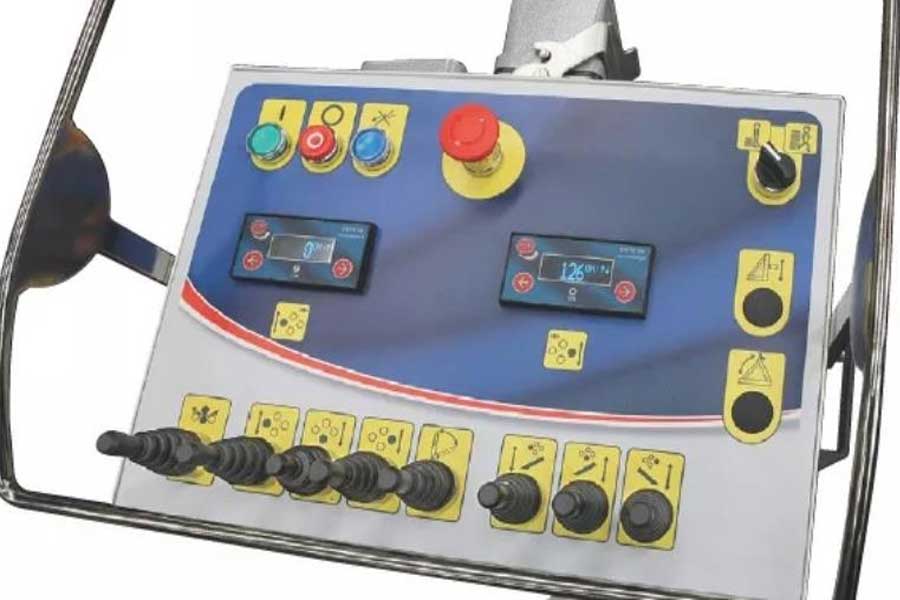
Coil for programming
Today’s smart CNC uses factory-developed algorithms tailored to the rolling process. To create a program on the CNC, the operator can select from the shape library, and then enter the required data. This can include material length, thickness, material type, yield strength, and other items that depend on the shape. For example, on parts with blending or changing radii or diameters, it is important to know where the blending starts and ends. The correction page on the controller allows the operator to adjust the program if necessary. In addition, some controls allow the import of DXF files.
A note about capacity
The “numerical control capability” of a machine is not its “rated capability” or “pre-bending capability”. It is less, usually about 40% of its rated capacity.
Consider a machine for multiple rolling of steel with a rated capacity of 1 inch thick and a yield strength of 36,000-PSI. This means that the machine can roll this material to between three to five times the diameter of the top roll, depending on the manufacturer. The same machine (again, depending on the manufacturer) rolling the same material may have a pre-bending capacity of 0.625 inches. With multiple passes, the minimum rolling diameter is between 1.2 and 1.5 times the diameter of the upper roll, and the thickness of the flat material at both ends is 1.5 to 2 times. For some material thicknesses, the minimum diameter that can be achieved is 1 times the diameter of the upper roll.
The CNC capacity of the same machine may be about 0.40 inches. This is because the control algorithm looks for “single pass rolling”, because no one can accurately calculate the influence of the weight and position of the plate in subsequent passes.
Material factors
Is the CNC on the bending machine really useful? Although nothing is perfect, CNC-based systems have achieved great success. When operators or programmers know the true properties of the materials they use (such as yield strength and actual thickness), the best chance of success comes. In fact, any shape rolled will be affected by the material particles, the exact thickness and yield strength of the material, the temperature of the sheet, and the way the material is processed before it reaches the roll.
Options such as top and side supports will help. For example, the top support can help support the workpiece and adjust the size of the part. Suppose you are rolling 10-ga. The material is 70 inches. the inside diameter of. Unfortunately, the material will bend due to its own weight after rolling half or more of a cylinder. This not only leads to inconsistent diameters, but also increases the chance of plate ends overlapping. In other words, you will roll twice the material thickness.
In this case, you can set the top support to a lower height (smaller diameter). Once the leading edge of the cylinder exceeds the top support, you move the top support to 70 inches. The diameter of the cylinder is precise and consistent, and its edges will not overlap, preventing rolling double the thickness of the material.
What should we do about material irregularities? For example, certain materials may have their own characteristics that even exceed the change in yield strength. To adapt to this, modern control uses artificial intelligence (AI) to “understand” your material and its characteristics. The more you scroll, the more you can control learning.
measuring system
The system can use a remote radius measurement system, directly connected or connected via Wi-Fi, to check the radius of the part when the sheet or sheet comes out of the reel. The system feeds information back to the control to make necessary adjustments and supplement the AI library.
Today, this represents the most advanced technology for typical rolling operations. But for some specific applications, it makes business sense to maximize real-time measurement.
For example, laser-based measurement equipment can be developed on both sides of the machine. The parts are rolled and passed. The device measures the diameter or radius and feeds the measured value back to the controller. The control compares the actual measurement with the measurement that the control thinks it should have. Make any corrections to the next pass and continue the process until the final part size is obtained.
For example, if the machine sees it is rolling 40 inches during the first pass. Diameter, and it knows that the diameter needs to be 36 inches, the machine’s algorithm—using known material properties such as thickness and yield strength—will make the necessary adjustments for the next pass. This extreme form of real-time measurement is rare, simply because of the time and money involved. But it at least shows what can be achieved by pushing the limits.
Cone and CNC
If equipped properly, CNC can perfectly store the roller position, linear stroke and the settings of each end position of each lower roller. Therefore, if you can place the correctly cut sheet in the correct position in the machine, it should “theoretically” use the correct settings for the previously rolled part to roll the part.
The only problem is that since the cone has two different diameters, the material must slide on the roller; that is, the small end near the cone attachment must pass at a slower speed than the large diameter. If the plate loses the “0” position, a consistent cone-to-cone result cannot be obtained. Depending on the material being rolled and the amount of investment, tapered rolls can sometimes help.
The manufacturer has not yet perfected the required software and related machine components to continuously roll the cone, especially if the CNC finds the setting. Different factors, as well as factors different from normal cylindrical rolling, will affect the final result. They include the placement of the sheet before the start of rolling, the tilt of the rolls, the temperature of the sheet, the dirt and position on the sheet, the slag on the plasma cutting material, and the position of different hardness caused by laser or plasma cutting.
Higher productivity
Modern roller presses can now be part of larger automated systems that can include feed systems, combined cutting and feeding systems, part loading, part ejection, special top support devices, and even robotic part handling and part welding. All of these provide manufacturers with a higher level of productivity.
When manually programming, the camera system can help the operator to position the printing plate as close as possible to the center distance between the upper roller and the middle and lower rollers. Rolling equipment manufacturers and service providers can even remotely access control to provide customer support, and can provide security interlocks for applications as needed.
New opportunities for rolling
Consider the operation of manufacturing excavator buckets. The operation may hit them on the bending machine, but doing so requires careful planning and handling. And regardless of the effect of the brake performing incremental bending, in most conventional applications, the brake may leave obvious bending lines.
CNC rolling does not leave bending lines, and can produce better-looking products overall. Smart CNC makes the production of these buckets as well as square tanks, ellipses, ellipses and other products that require a true mixing radius much faster than before. In addition, CNC can benefit from training. By working on CNC rolls and observing the process, inexperienced operators can learn more about rolling.
Like most machine tools, CNC rolling systems can help you achieve certain goals, but adjustments may be necessary to produce perfect results. In any case, when you make these adjustments correctly, CNC rollers can help reduce your cost per piece, and in many cases, can significantly reduce your production time.
Link to this article: CNC has increased the rolling output of thin and medium-thick plates to automate the rolling process。
Reprint Statement: If there are no special instructions, all articles on this site are original. Please indicate the source for reprinting:https://www.cncmachiningptj.com/,thanks!
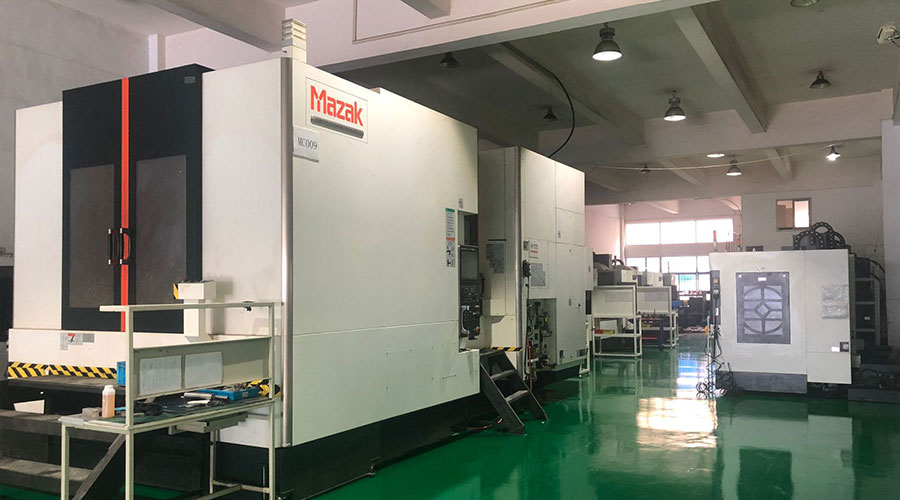 3, 4 and 5-axis precision CNC machining services for aluminum machining, beryllium, carbon steel, magnesium, titanium machining, Inconel, platinum, superalloy, acetal, polycarbonate, fiberglass, graphite and wood. Capable of machining parts up to 98 in. turning dia. and +/-0.001 in. straightness tolerance. Processes include milling, turning, drilling, boring, threading, tapping, forming, knurling, counterboring, countersinking, reaming and laser cutting. Secondary services such as assembly, centerless grinding, heat treating, plating and welding. Prototype and low to high volume production offered with maximum 50,000 units. Suitable for fluid power, pneumatics, hydraulics and valve applications. Serves the aerospace, aircraft, military, medical and defense industries.PTJ will strategize with you to provide the most cost-effective services to help you reach your target,Welcome to Contact us ( [email protected] ) directly for your new project.
3, 4 and 5-axis precision CNC machining services for aluminum machining, beryllium, carbon steel, magnesium, titanium machining, Inconel, platinum, superalloy, acetal, polycarbonate, fiberglass, graphite and wood. Capable of machining parts up to 98 in. turning dia. and +/-0.001 in. straightness tolerance. Processes include milling, turning, drilling, boring, threading, tapping, forming, knurling, counterboring, countersinking, reaming and laser cutting. Secondary services such as assembly, centerless grinding, heat treating, plating and welding. Prototype and low to high volume production offered with maximum 50,000 units. Suitable for fluid power, pneumatics, hydraulics and valve applications. Serves the aerospace, aircraft, military, medical and defense industries.PTJ will strategize with you to provide the most cost-effective services to help you reach your target,Welcome to Contact us ( [email protected] ) directly for your new project.
Link to this article:CNC has increased the rolling output of thin and medium-thick plates to automate the rolling process。
Reprint Statement: If there are no special instructions, all articles on this site are original. Please indicate the source for reprinting.:Cnc Machining,Thank!^^

